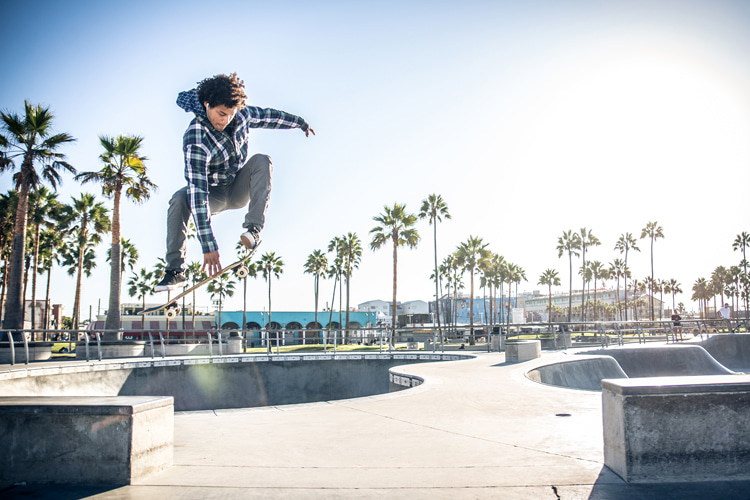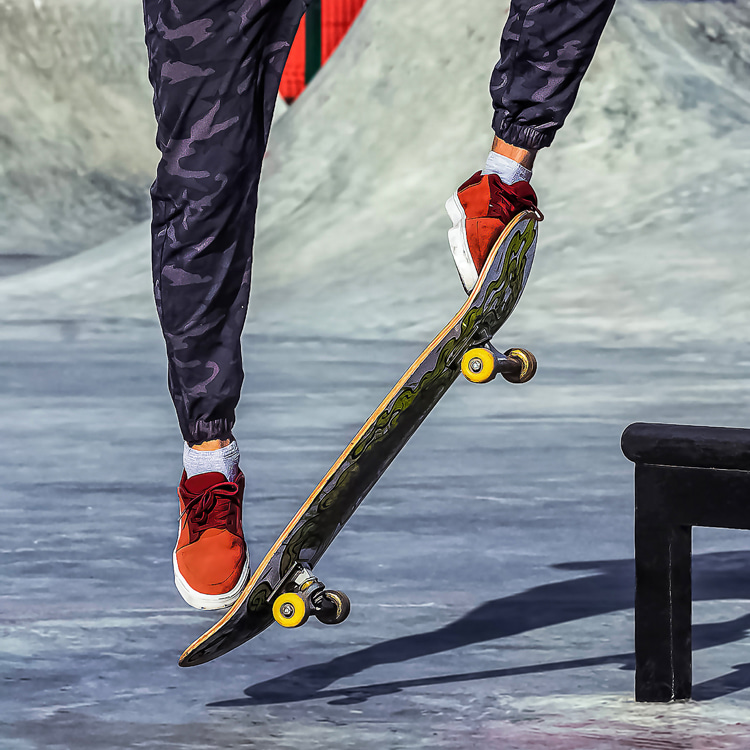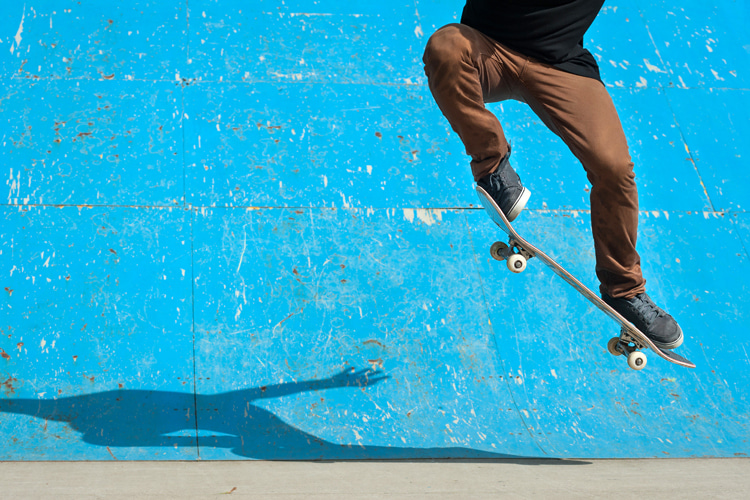Skateboarding is a thrilling symphony of grit, precision, and air. At its heart lies the ollie, a fundamental maneuver that's both a starting point and a stepping stone.
Named after its inventor, Alan "Ollie" Gelfand, this seemingly simple jump, with the board glued to the skater's feet, is the cornerstone of countless tricks and a testament to a skater's prowess.
Perfecting the ollie is akin to mastering the scales in music.
It's an essential language that every skater needs to speak, influencing how they negotiate obstacles, demonstrate creativity, and define their style.
Whether popping over a sidewalk, springing onto a ledge, or soaring over a daunting stair set, the ollie's utility and versatility are unparalleled.
But why aspire for a higher ollie? A loftier leap offers more than just bragging rights.
It expands the landscape of possibilities, opening up new terrain and larger obstacles; it improves the skater's timing, control, and style.
Above all, it signifies progression, a tangible measurement of a skater's growth and perseverance.
Elevating your ollie is a journey of understanding the nuances of your body, your board, and the laws of physics.
The following chapters will serve as your roadmap, offering a comprehensive guide on how to achieve a higher ollie.
From the foundational prerequisites through the delicate choreography of foot placement, choosing the right gear, selecting the optimal practice spot, and mastering the ollie's four-step ballet to identifying and rectifying common mistakes, we'll be with you at every stage.
The sky's the limit, so let's start reaching for it.

Prerequisites
Achieving a higher ollie is not an overnight accomplishment but rather the culmination of time, patience, and effort. Skaters should:
- Have a strong understanding of the basics of skateboarding;
- Already be able to perform a standard ollie confidently;
- Be prepared to practice consistently and patiently;
Foot Placement
Ideal foot placement is a crucial factor in increasing your ollie height:
- Back foot: Place it on the tail of the skateboard. It's the back foot that generates the initial snap, propelling the skateboard upwards;
- Front foot: This should be placed across the skateboard, a few inches behind the front bolts, with the tip of the shoe aligned with the edge of the board. Sliding this foot upwards during the ollie helps lift the board higher;
Remember, though foot placement can be adjusted for comfort, straying too far from these guidelines could impact your ollie's effectiveness.

The Right Equipment
Skateboarding gear matters:
- Skateboard: A good-quality skateboard with a responsive deck and grip tape, and the right hardness and size wheels facilitate a higher ollie;
- Shoes: Skate shoes with flat soles provide a better grip and help slide your foot more effectively during the ollie;
Ideal Practice Environment
Choose a flat, open space free of traffic and distractions. Smooth concrete, like a driveway or a skatepark, is ideal.
Practicing stationary ollies initially can help you focus on height rather than balance, but it can also make it harder to pop and gain air time.
Try moving slowly and, as you get more comfortable, speed up.
The Four-Step Ollie
Mastering a higher ollie comes down to refining the four key steps:
- The Pop: The ollie begins with a snap or "pop" of the tail against the ground. The harder and faster you pop, the higher the ollie, but remember that control is essential;
- The Slide: Drag the side of your front foot up towards the nose of the board. This movement helps lift the board;
- The Jump: Jump upwards off your back foot while pulling your knees to your chest. The higher you jump, the more room your board has to rise;
- The Landing: Aim for a smooth landing, with your weight balanced and your knees slightly bent to absorb the impact;
Training Techniques
To maximize your ollie height, consider these exercises:
- Strength Training: Consider incorporating exercises that strengthen your leg muscles, particularly your calves and quads, as these muscles play a crucial role in the ollie;
- Flexibility Training: Enhancing your flexibility can also aid in achieving a higher ollie. Work on your hip flexor, hamstring, and calf flexibility to ensure that you can bring your legs closer to your body during the jump;
- Jump training: Practice jumping off the ground to improve your vertical leap;
- Ollie over obstacles: Start small and gradually increase the height of the objects you ollie over. This can be a motivational way to track your progress;
Common Mistakes
Avoid these frequent errors:
- Incomplete slide: Ensure you slide your foot up the entire length of the board for maximum lift;
- Not pulling knees up: Pulling your knees up gives the skateboard more room to rise;
- Insufficient pop: Don't hesitate to pop the tail of the skateboard hard against the ground;
